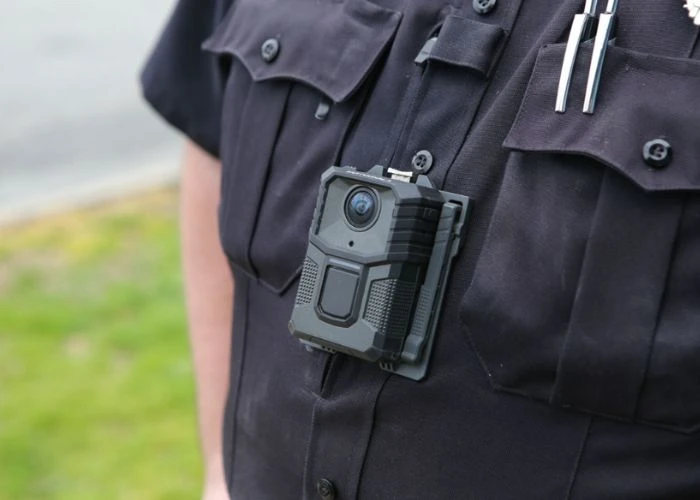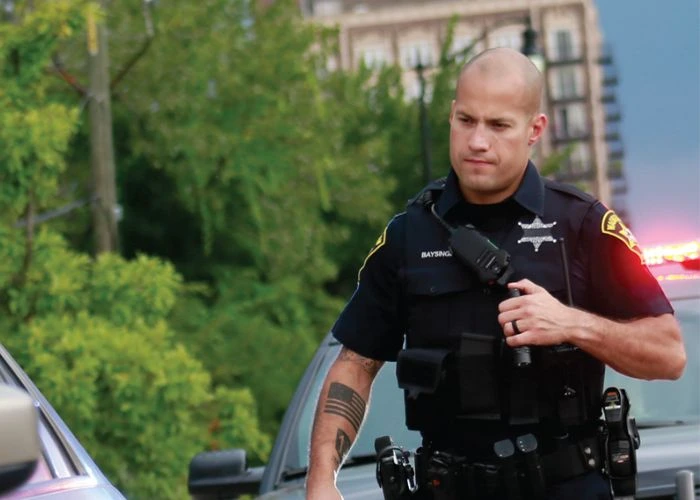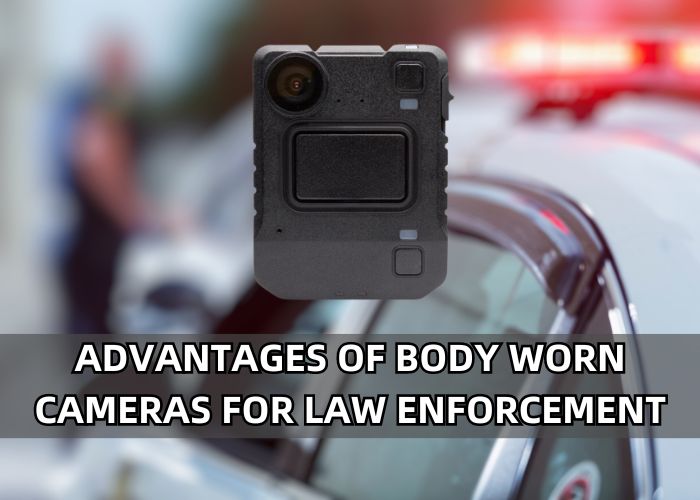Body worn cameras, or BWCs, are important tools for police and other law enforcement officers. They are small cameras worn on the body that record what happens during police work. This technology is getting better over time. It helps make things clearer and more open between the police and the community. It also makes sure everyone is responsible for their actions. BWCs are a big help in making sure police work is done right and building trust with people.
In this article, we’ll explore more specifically how body worn cameras keep law enforcement officers safe when on the job, serving their community.
What is a Body Worn Camera?
A body worn camera (BWC) is a small device that police officers wear to record their interactions with the public. This includes talking to people, arresting suspects, and dealing with emergencies. These cameras capture video and audio, which can be used as evidence in court, help police be more open with their communities, and ensure everyone behaves properly.
Body worn cameras (BWCs) consist of various components, including the camera itself, which can be attached to different parts of an officer’s uniform such as the shoulder or hat, depending on seasonal requirements. These cameras also feature storage options for videos, either within a police station’s computer system or securely online in a cloud environment, ensuring the privacy and safety of the recordings. Some BWC models even enable officers to upload videos remotely without returning to the station.
After recording, the footage requires secure storage and management, typically achieved through encryption to prevent unauthorized access. Officers can upload videos at the end of their shift via docking stations or, in some instances, directly from the field using wireless connections. The stored videos are accessible for review, analysis, and potential use in court proceedings, whether stored on local servers or cloud-based platforms. This meticulous handling of video evidence is crucial for fostering transparency and accountability within law enforcement operations.
When comparing BWCs to dashboard cameras in police cars or CCTV cameras on streets, BWCs have a clear advantage. Dashboard cameras only record what’s in front of the car, and CCTV can’t follow officers around. BWCs, however, go wherever the officer goes, providing a complete view of what happens during their shift. This makes BWCs a powerful tool for police work, offering a close-up perspective of events as they unfold.
Operational Features of Body Worn Cameras
These devices are designed to be easy to use and effective in capturing high-quality video and audio evidence. When an officer starts their shift, they can activate their BWC with a simple button press. Some cameras even start recording automatically in certain situations, thanks to sensors, or when specific actions are taken, like drawing a weapon. This ensures important moments are not missed.
As mentioned, BWCs can be attached to different parts of an officer’s uniform, such as the chest, shoulder, or even on sunglasses or a hat. This flexibility allows the camera to be placed in a position that best captures interactions, no matter the type of uniform or the weather conditions. However, choosing the right spot is crucial for getting clear footage without obstructions.

The Impact of Body Worn Cameras on Law Enforcement
Body worn cameras (BWCs) play an integral role in modern law enforcement by enhancing transparency and generating trust between the police and the community they serve. This idea traces back to the 19th century when Sir Robert Peel, often considered the father of modern policing, introduced principles emphasizing the importance of public support and respect for the police. Peel’s insights underline that the effectiveness of the police depends greatly on their legitimacy in the eyes of the public, a concept that remains vital today.
In recent years, the use of force by police has led to civil unrest in many parts of the U.S., bringing to light the challenges law enforcement faces in maintaining the public’s trust. BWCs have become a critical tool to confront these challenges, providing a clear, unbiased account of police interactions. By recording events as they happen, BWCs offer a transparent view that can validate the rightful actions of officers or identify areas for improvement.
Mounted on an officer’s glasses or chest, BWCs supply real-time data during patrols and encounters with the public, enhancing officer safety and operational efficiency. They also serve as a preventive measure against misconduct by both officers and civilians by offering a clear record of their actions. Furthermore, BWCs are invaluable in the judicial process, where video evidence can corroborate statements and observations, ensuring a fairer evaluation of incidents.
The presence of BWCs can deter negative behavior, encouraging professionalism among officers and lawful conduct among the public. By documenting interactions, BWCs support the judicial process and reinforce police accountability and community trust, aligning with Peel’s principles of law enforcement legitimacy.
EMCI Wireless Solutions for Body Worn Cameras
Motorola has stepped forward with innovative solutions for body worn cameras (BWCs), introducing a range of devices designed to meet the demanding needs of law enforcement. Among their leading products are the V300, VB400, and V700 body worn cameras, each with unique features tailored for the rigorous environments of police work.
V300 Body Worn Cameras for Law Enforcement
The V300 camera stands out for its ability to operate continuously, surpassing the typical 12-hour shift to accommodate extended duty periods. This is made possible through its detachable battery system, ensuring that officers are not left without recording capabilities when they need them the most. Moreover, the V300 supports wireless uploading, allowing officers to transfer video evidence without the need to physically dock the camera, enhancing efficiency and convenience.
Motorola VB400 Body Worn Camera
Moving to the VB400, this device has a wide-angle, 1080p HD lens designed to capture high-quality video from the wearer’s perspective. Its pre-record function is crucial for documenting unexpected incidents, capturing video before the actual recording is triggered. The VB400’s rugged build and intuitive design, combined with Bluetooth and Wi-Fi connectivity, provide a robust solution that withstands harsh conditions while keeping officers connected.
Motorola V700 LTE Body Worn Camera
The V700 LTE body worn camera is a leap forward, offering not just high-quality recording but also LTE connectivity to keep officers linked to their teams and command centers. This integration enhances situational awareness and allows for real-time coordination, making the V700 an essential tool for modern law enforcement operations.
Advantages of Body Worn Cameras for Law Enforcement
Body worn cameras (BWCs) offer several key advantages for law enforcement, enhancing transparency, accountability, and overall effectiveness.
- Enhanced Transparency and Accountability: BWCs provide a clear record of police interactions with the community, helping to build trust in areas where it may be lacking. This documentation is crucial, especially in incidents involving force. By offering an unbiased account of events, BWCs can validate the actions of officers and clarify circumstances for everyone involved.
- Improved Behavior on Both Sides: Officers and citizens tend to behave more respectfully, knowing an encounter is recorded. This “civilizing effect” can reduce confrontations, leading to safer interactions and fewer complaints against law enforcement.
- Faster Resolution of Complaints: BWCs can expedite the investigation of complaints and lawsuits by providing concrete evidence that supports or refutes claims of misconduct. This saves time and reinforces public confidence in the police force’s commitment to fairness.
- Valuable Evidence for Prosecutions: Video from BWCs can be pivotal in arrests and court cases, often speeding up legal processes. It helps corroborate facts, leading to more guilty pleas and efficient justice.
- Training and Professional Development: Footage from BWCs is an invaluable tool for training, allowing law enforcement agencies to review real-life situations. This helps advance officer professionalism and assess adherence to policies, thereby improving policing strategies and outcomes.

EMCI Wireless and Motorola are Your Partners for Body Worn Cameras for Public Safety
EMCI Wireless, in partnership with Motorola, remains at the forefront of advancing public safety through state-of-the-art body worn camera (BWC) technology. These devices have become indispensable in bolstering the safety of front-line workers and fostering trust within communities. By offering transparent, real-time documentation of law enforcement activities, BWCs have transformed how officers interact with the public, ensuring accountability and enhancing the legitimacy of their actions.
Looking ahead, the potential of BWC technology to revolutionize law enforcement practices remains vast. Continuous innovations promise even greater improvements in operational efficiency, evidence gathering, and officer training. As we move forward, EMCI Wireless and Motorola are committed to being your trusted partners in this journey, providing cutting-edge solutions that meet the evolving needs of public safety professionals. Request a quote today.






